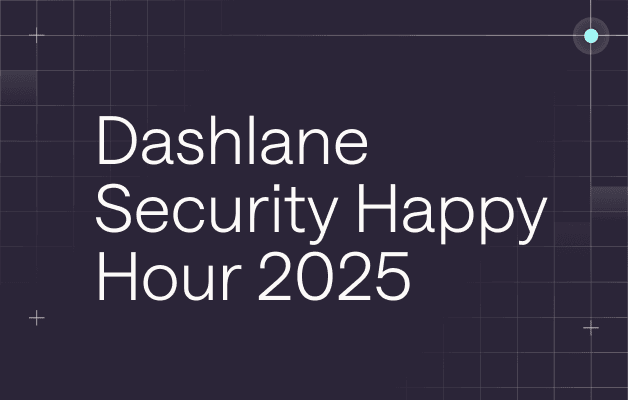Why Browser-Native Security Matters: Dashlane’s Approach to Protection at the Point of Risk

The browser has become mission-critical infrastructure
The modern workplace has fundamentally changed. Apps that once required desktop installations now run entirely in browser tabs. Teams collaborate through web-based platforms. Sensitive data flows through SaaS apps. AI assistants operate within browser contexts, processing proprietary information and automating workflows.
This shift has been dramatic: Organizations now rely on over 100 SaaS apps on average, each accessed exclusively through the browser. For most knowledge workers, the browser window is where they spend the majority of their day—managing projects, accessing customer data, handling financial information, and making critical business decisions.
This transformation creates a security paradox. The browser has become the gateway to everything that matters in modern work, yet most security architectures still treat it as just another app.
Redefining security in the browser-first era
Traditional defenses—network firewalls, email gateways, endpoint protection—were built for a different era. They struggle to see what happens inside the browser runtime, where users interact with authentication flows, grant permissions to apps, and handle credentials that unlock entire organizational systems.
Meanwhile, attackers have adapted. Rather than exploiting browser vulnerabilities through memory corruption or sandbox escapes, they've shifted to exploiting through browsers. They use sophisticated phishing, malicious OAuth flows, session hijacking, and social engineering that operates within the browser's legitimate security model.
These attacks succeed not by breaking the browser, but by manipulating the human making decisions within it.
At Dashlane, we've built our security architecture around this reality: If the browser is where work happens, then security must operate inside the browser itself.
That principle is what led us to build OmnixTM, our new browser-first security platform. Omnix transforms Dashlane from a password manager into an active security layer that protects authentication, identity, and user behavior directly where they occur. It unifies password management, passkey support, risk detection, and phishing prevention within a single control plane that operates entirely in the browser.
Our extension isn't simply a password manager that happens to run in a browser. It's now the core of Omnix—a security control plane positioned at the critical intersection of identity, risk, and user behavior.
When the browser serves as both a productivity gateway and primary attack vector, Omnix turns the extension into an essential anchor of control, providing visibility and protection that other security layers cannot achieve.
The enterprise browser security landscape
The threat landscape has evolved alongside the browser's expanding role.
Modern attacks use generative AI to create highly convincing phishing content, exploit OAuth frameworks through seemingly legitimate permission requests, and hijack sessions without stealing credentials. The "last mile" gap—what network security tools see versus what actually renders in the browser—creates fundamental visibility problems that attackers exploit through encoding tricks and dynamic content generation.
Enterprises have two primary architectural options:
- Enterprise browsers that offer maximum control through complete browser replacement. The trade-off is significant organizational change. Users abandon familiar tools, IT teams face months-long migrations, and the approach typically works only for managed devices.
- Browser-native security extensions like Dashlane Omnix that augment existing browsers with security capabilities. The trade-off is slightly less control than a custom browser, but dramatically faster deployment and lower user friction.
We've chosen the augmentation path deliberately. Our extension delivers browser-agnostic protection across Chrome, Edge, Firefox, and Safari. We anchor our security model in identity, which is the common thread connecting phishing, OAuth abuse, and session hijacking. We integrate with existing security stacks rather than replacing them, and users maintain their familiar browser experience with minimal change management.
Architecture: Defense-in-depth at the browser layer
Dashlane’s browser security model builds on a security-first design that applies zero-knowledge principles to every interaction between the browser extension and the Omnix platform. Sensitive information is processed locally, while only encrypted data flows to Omnix for aggregated threat detection.
Here’s how it all works together:
- Extension layer: Operates locally in the browser to detect risk signals like phishing or weak and compromised credentials, keeping all sensitive data on-device. This also allows us to embed local AI model key features such as autofill or phishing detection, while maintaining privacy and security.
- Secure data flows: Protected end to end—at rest, in transit, and in use—through our patented use of confidential computing and secure cloud enclaves. Dashlane never has access to customer data.
- Omnix platform: Correlates encrypted telemetry and threat intelligence, delivering actionable insights to IT and security teams.
This layered design ensures privacy by default, enabling continuous protection, adaptive learning, and visibility at the exact point of risk: The browser.
As Guillaume Maron, Dashlane’s co-founder and VP of Architecture, explains, "Security audit trails are important for IT and security teams, but they also create risks in the wrong hands. By processing sensitive data locally in the browser and using confidential computing in the cloud, we've built a system where our customers get the insights they need without creating an additional risk.”
Security capabilities at the point of risk
Operating inside the browser enables core features of a credential manager, such as generating strong unique passwords in context or allowing customers to manage passkeys securely. In addition, it allows Dashlane to offer security controls that react in real time to end-user behaviors:
- Real-time risk detection: Identifies credential misuse as it happens, vault or no vault.
- Behavioral alerts: Guides users with contextual prompts—about a weak password they need to change, for example—in context, without disrupting workflow.
- AI-powered phishing detection: Combines local ML models with cloud-based training to detect malicious phishing pages as a last mile of defense.
This approach merges behavioral science and security engineering, protecting users while educating them in the flow of work.
The strategic advantage of extension-based security
As enterprises move deeper into browser-based workflows, extension-based security delivers a balance of protection, privacy, and usability for the entire organization.
For IT and security teams, mass deployment of the Dashlane browser extension can be done quickly across the whole workforce, providing visibility and control across browsers and operating systems while integrating easily with the existing cybersecurity tech stack (SIEM and other SOC tools). Our zero-knowledge model meets both user-privacy expectations and enterprise compliance requirements, ensuring that security and trust go hand in hand.
For employees, this approach preserves the familiar browsing experience—no new browser to learn or disruptive workflow changes—while extending consistent protection across personal and professional contexts.
And for organizations, extension-based security adds a critical layer of defense without replacing infrastructure, which closes the gap (or helps close the gap) between network perimeter and user activity and enables resilience against AI-driven threats and evolving attack surfaces.
Closing the gap between users and risk
As AI copilots and cloud apps redefine workflows, the browser will remain the workspace of the future—and its security layer the front line. Dashlane’s extension and Omnix platform are evolving with it, expanding into behavioral analytics and real-time intervention.
Organizations that treat the browser as optional infrastructure will face increasing risk. Those that secure it as a core layer will lead the way.
Security must meet users where they work. That means protecting them at the point of risk—inside the browser, where modern business truly happens.
*Gartner, Innovation Insight: Secure Enterprise Browsers, Evgeny Mirolyubov, Max Taggett, John Watts, 1 April 2025
GARTNER is a trademark of Gartner, Inc. and/or its affiliates.
Sign up to receive news and updates about Dashlane





